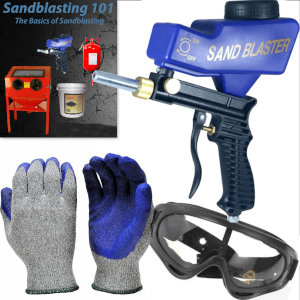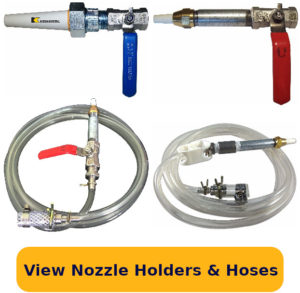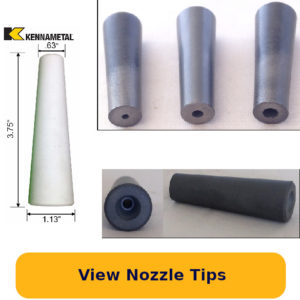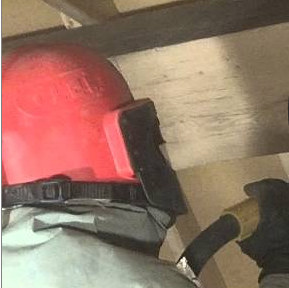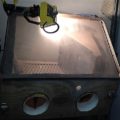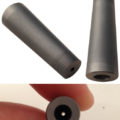I got an email from someone wanting to sandblast wooden beams and it sounds like a cool approach. Below is some of the details he gave me with my responses.
I’m doing a project, and wanted your opinion on what would work best. I’ve rented 40-50 year old loft in an old factory that has big 12×16 (approx) beams running across the ceiling, and vertically. There is about 30 linear feet total, and the previous tenant has painted them a god-awful yellow. I wanted to sand them down to the original wood – and keep as much grain as possible. I was wondering what would be the best fit of sand blaster for this job, without renting a huge commercial air compressor (unless I need to then I will).
To be honest with you, I would probably use a belt sander to do this. That way it will sand the paint down to the wood in a smooth uniform flat surface. You can probably buy or rent these much cheaper.
If you do want to stick with the sandblaster, it depends on how often you want to refill the thing. The bigger the canister (for the pressure pot or siphon sandblaster), the longer you can blast without stopping to refill it. How long each lasts will depend on the size of the nozzle and the amount of grit adjusted will vary also- so its hard to say. Manufacturers will have all the data and minimum air requirements for each particular sandblaster. So you can just check and compare to fit your needs.
The air compressor manufacturer will tell the air ratings also- so all you have to do is match the compressor with at least the minimum sandblaster requirements. Its always best to get a larger compressor though so it doesn’t run as much.
I actually want the uneven ‘grainy’ look to the wood to make it very rustic. I think it’ll be a great feature pieces in the unit. Will the sand blaster create that effect? And do you have suggestion as to what level of grit and nozzle size I should have for a even job?
That sounds like an interesting approach. I kind of like the idea. I have never tried it but I think I would like to now. The sandblaster should help create that effect and you would most likely need a pressure pot system so that it will cut some areas deeper.
You would probably want a courser grit- something around 50-90 grit. Lean more toward the finer grit if you want it to be smooth.

